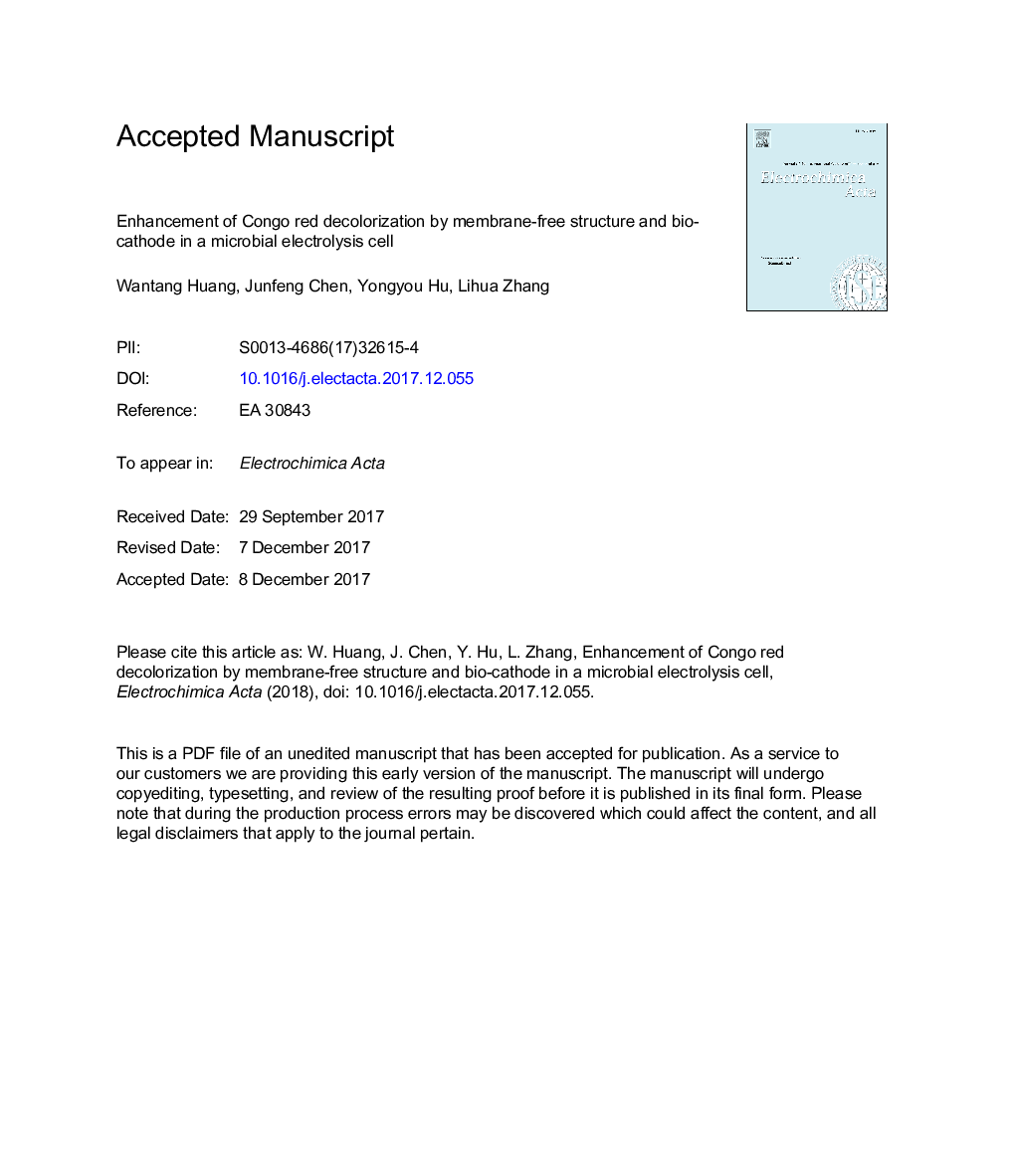| Article ID | Journal | Published Year | Pages | File Type |
|---|---|---|---|---|
| 6604727 | Electrochimica Acta | 2018 | 21 Pages |
Abstract
A membrane-free microbial electrolysis cells (MFMEC) with bio-cathode was applied to enhance azo dye Congo red decolorization by the improvement of cathodic action and membrane abandon. To reveal the advantages of MFMEC, a membrane-free electrolysis cell (MFEC) without microorganism and a microbial electrolysis cell (MEC) with membrane were set as comparisons. The electrochemical characteristics of MFMEC and its relation with decolorization were analyzed by measuring cathode potential, EIS and current change. The results showed that MFMEC with bio-cathode acquired lower cathode potential than MFEC. The charge transfer resistance of MFMEC was 5.2 Ω which was lower than MEC (43.6 Ω). The decolorization efficiency of MFMEC with different voltages (0.3 V, 0.6 V and 0.9 V) were nearly identical and stable at 87.9%, 85.1%, and 86.7% respectively in 24 h. In batch tests without solution renewal, the decolorization had a remarkable increasing (25%) in cycle 2 and 3, then it had declined since cycle 4. The main degradation product was benzidine which produced by azo bond cleavage. More CH4 was produced with 0.9 V as a side reaction that restricted further increase of decolorization rate. The result demonstrated that both the act of co-substrates and accepting electrons from cathode were the main decolorization approaches of MFMEC.
Related Topics
Physical Sciences and Engineering
Chemical Engineering
Chemical Engineering (General)
Authors
Wantang Huang, Junfeng Chen, Yongyou Hu, Lihua Zhang,
